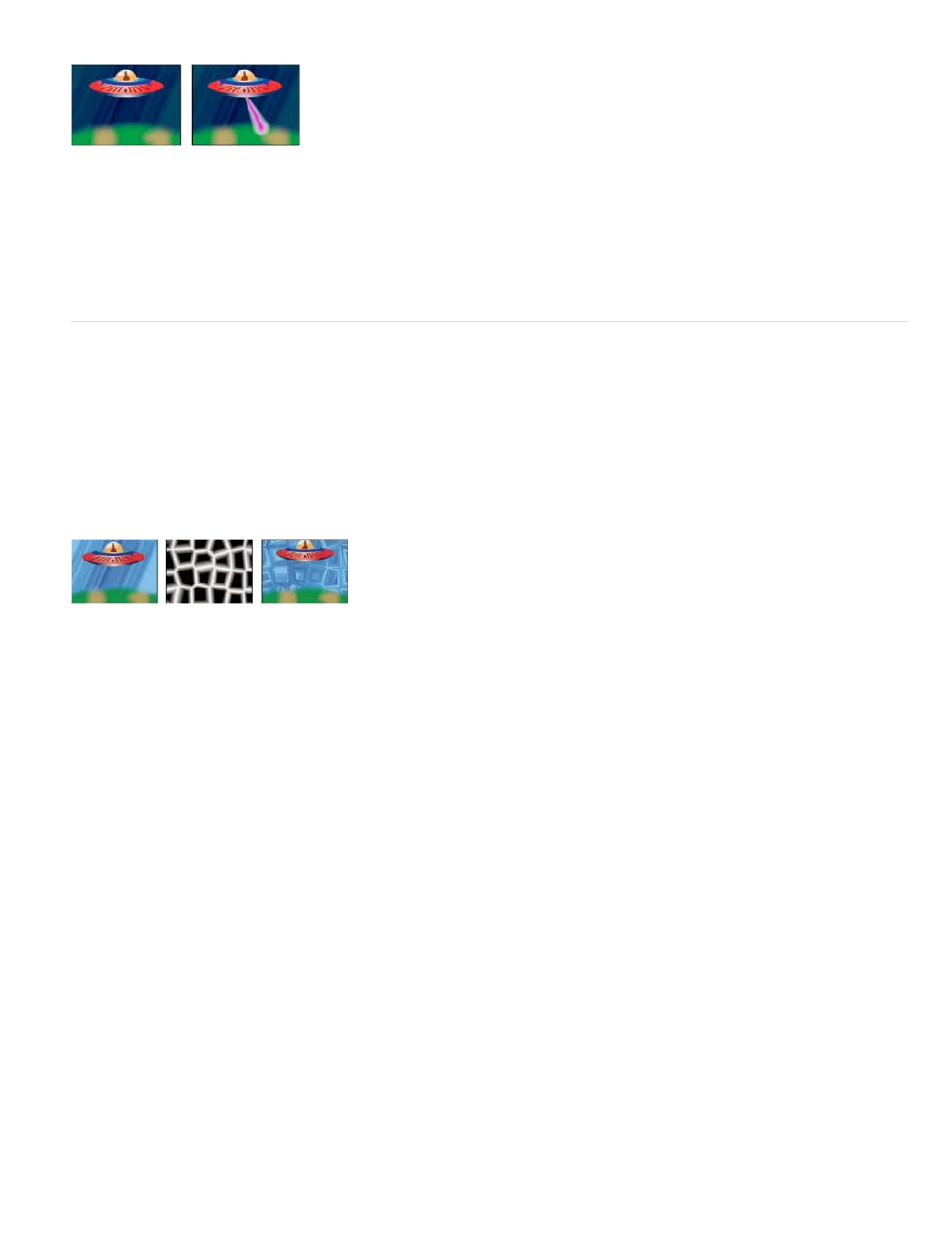Cell pattern effect – Adobe After Effects User Manual
Page 512

Cell Pattern
Invert
Contrast/Sharpness
Overflow
Clip
Soft Clamp
Wrap Back
Original (left), and with a simulated beam (right)
The Length control specifies the length of the beam based on a percentage of the Time specified. For example, a setting of 100% means that the
visible beam length is at its maximum when the Time control is 50%. Time specifies the time of the beam’s travel from start to end as a
percentage. The 3D Perspective control uses 3D perspective based on start and end thickness if Time is animated.
Cell Pattern effect
The Cell Pattern effect generates cellular patterns based on cellular noise. Use it to create static or moving background textures and patterns. The
patterns can be used in turn as textured mattes, as transition maps, or as a source for displacement maps.
John Dickinson provides an example project on the
that demonstrates the use of the Cell Pattern effect in a seamlessly
looping background animation.
Richard Harrington provides additional information and examples for using the Cell Pattern effect on
.
This effect works with 8-bpc color.
Original image (left); the Cell Pattern effect creates a displacement map (center), which is used as a displacement map for the Displacement Map
effect (right).
The cell pattern to use. HQ denotes high-quality patterns that render with more definition than their unmarked counterparts. Mixed
Crystals is available only as a high-quality option.
note: The Static Plates option is identical in appearance to the Plates option. However, when evolving, the static plates retain a uniform lightness
value, whereas the plates shift the lightness of the cell pattern.
Inverts the cell pattern. Black areas become white, and white areas become black.
Specifies the contrast of the cell pattern when you use the Bubbles, Crystals, Pillow, Mixed Crystals, or Tubular cell pattern.
The control specifies sharpness for any of the Plate or Crystallize options.
note: The option chosen from the Overflow menu affects the contrast.
How the effect remaps values that fall outside the grayscale range of 0-255. Overflow isn’t available if sharpness-based cell patterns
are chosen.
Values above 255 are mapped to 255. Values below 0 are mapped to 0. Contrast amount controls how much of the image falls
outside the range 0-255; higher contrast amounts result in a mostly black or white image, with less gray. Therefore, less subtle cellular
detail appears at higher contrast settings.
Remaps grayscale values to fall inside the 0–255 range. Contrast appears reduced; cells are mostly gray with few areas of
pure black or white.
Values above 255 or below 0 are reflected back into the 0-255 range. For example, a value of 258 (255+3) is reflected to 252
(255-3), and a value of -3 is reflected to 3. With this setting, Contrast values above 100 increase complexity and detail.
508
